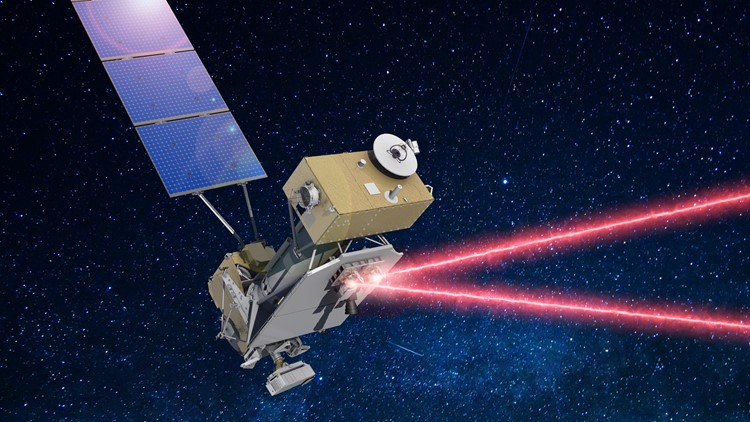Communication back on Earth is complex enough, but add space into the mix and finding the most efficient practices are key.
To help bolster an effort to streamline communication, NASA says missions could benefit from a new way of "talking" with Earth – lasers.
"Laser communications, also known as optical communications, will further empower missions with unprecedented data capabilities," it wrote.
Transferring over to a laser-based form of space communication will allow NASA to accelerate its data transfers and make room for more discoveries. It will also require less cargo volume and lessen the drain of spacecraft power systems, according to the agency
Officials say they believe lasers will enable 10 to 100 times more data to be transmitted back to Earth than the current radio frequency systems.
"With lasers, it would take about nine days," NASA added.
So, how does it work? NASA says laser communications operate off infrared light, which is invisible to the human eye but can be found in things like TV remotes and heat lamps.
The infrared light then packs data into tight waves that will traverse space to reach ground stations back here on Earth and provide data to those who need it. While that sounds simple, NASA says being off by even a fraction of a degree with laser communications can result in missing a target entirely.
"Like a quarterback throwing a football to a receiver, the quarterback needs to know where to send the football, i.e. the signal, so that the receiver can catch the ball in stride. NASA’s laser communications engineers have intricately designed laser missions to ensure this connection can happen," NASA wrote as an example.
NASA's first payload to test the new form of communication is called the Laser Communications Relay Demonstration. The agency announced the laser's liftoff on a ULA Altas V rocket from Space Launch Complex 41 at Cape Canaveral Space Force Station in Florida has been delayed. A new launch date has yet to be announced.
Once in geosynchronous orbit (22,000 miles above Earth), the LCRD will work to support missions in the "near-Earth region." To start, NASA says LCRD will test laser communication capabilities for two years in an effort to refine technologies and increase knowledge.
From there, it will experience its first in-space use through a mission set to launch to the International Space Station in 2022.
"The terminal will receive high-quality science data from experiments and instruments onboard the space station and then transfer this data to LCRD at 1.2 gigabits per second. LCRD will then transmit it to ground stations at the same rate," NASA wrote.
What other people are reading right now:
- Tuesday marks 1 year since George Floyd's murder: 5 things that have changed
- Central Avenue’s stories: How George Floyd’s death conjures memories of 1967, 2014 deaths of unarmed Black men in Tampa
- Hiring teens is a great asset to one local business
- Tiger seen wandering neighborhood is thriving at new sanctuary home
- Flesh-eating 'black fungus' killing off patients who survived COVID-19
►Breaking news and weather alerts: Get the free 10 Tampa Bay app
►Stay In the Know! Sign up now for the Brightside Blend Newsletter



